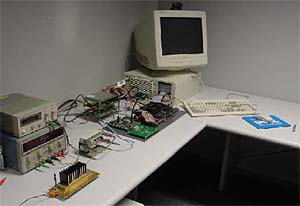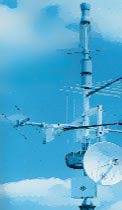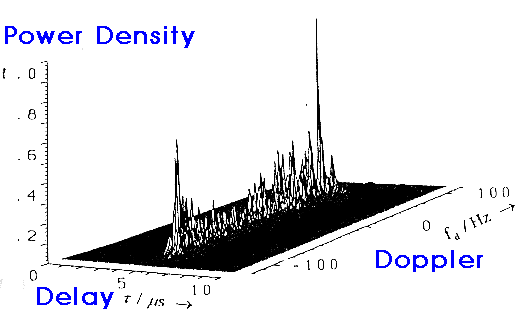 JPL's Wireless Communication Reference Website
JPL's Wireless Communication Reference Website JPL's Wireless Communication Reference Website
JPL's Wireless Communication Reference Website
This way, authors and contributors share information about their
progress.
Community messages include target dates and
deadlines for publication of new editions,
addition of new chapters or topics,
major new contributions, file check-in
check-out, major changes of directory
structure.
Access is open to anyone who indicates
an interest in publishing on the wireless
communication CD-ROM. See
wireless.per.nl for details.

... Send
us a photograph of a cellular base station in your part of the world.
| If you are a hobby photographer and enjoy seeing your photographs on this CD ROM, why not send us your picture. Remember, this is a multimedia presentation and we are interested in much more than textual contributions only. We would like to include your photographs of antenna installations, measurement set-ups, circuit boards, chip designs, products, etc. 
|
gif, png or jpg images, Adobe Acrobat &trad;, postscript,
audio or video contributions, etc.
Please choose file names that adhere to the
DOS 8.3 character format, except for Java &trad; animations.
Do not use uppercase in any filename.
Please use the same four characters for all files that belong together. Please appropriately use subdirectories audio, video, images slides, postscrp and software.
This helps to keep the file structure of the CD ROM manageble.
gif figures
 matlabTM
files. We have had very positive feedback from matlab code included on the
CD-ROM. It allows other researchers to elaborate on your work, thus use your
work as a reference. Further, good research means that other can verify what
you have been calculating. Just a curve of a BER doesn't say anything unless
you explain the assumptions and model. Even better, also allow other to see
the model being translated into math and software code.
matlabTM
files. We have had very positive feedback from matlab code included on the
CD-ROM. It allows other researchers to elaborate on your work, thus use your
work as a reference. Further, good research means that other can verify what
you have been calculating. Just a curve of a BER doesn't say anything unless
you explain the assumptions and model. Even better, also allow other to see
the model being translated into math and software code.

| Figure: measured scatter plot for DCS 1800 MHz system.
Doppler spread = 60.3 Hz; Coherence time = 5.9 msec. Delay Spread = 1.2 msec; coherence BW = 1.3 MHz Source: Research group of Prof. Paul Walter Baier, U. of Kaiserslautern, Germany. |
You may give table cells the color cccccc if you like to have some contrast with the surounding text.
| Environment | Delay Spread | Angle spread | Max. Doppler shift at 1800 MHz | |
| Macrocellular: Rural flat | 0.5 ms | 1 degree | 200 Hz | |
| Macrocellular: Urban | 5 ms | 20 degrees | 120 Hz | |
| Macrocellular: Hilly | 20 ms | 30 degrees | 200 Hz | |
| Microcellular: Factory, Mall | 0.3 ms | 120 degrees | 10 Hz | |
| Microcellular: Indoors, Office | 0.1 ms | 360 degrees | 2..6 Hz | |
| Table Source: A.J. Paulray and C.B. Papadias, "Space-Time Processing for Wireless Communications", Signal Processing Magazine, November 1997, pp. 49-83.
| ||||
 Audio commentary: Peter M. Grant, Distinguished IEEE Lecturer 1997, discusses
the table parameters (MPEG audio). See also: Full
talk, MPEG plug-in on
Audio commentary: Peter M. Grant, Distinguished IEEE Lecturer 1997, discusses
the table parameters (MPEG audio). See also: Full
talk, MPEG plug-in on We encourage authors to refer on their personal web sites to our demo. We allow authors to put on the World wide web those pages that they personally contributed to the CD ROM, with a reference to this CD ROM.
<H1>Scatter Function</H1>
Which looks like:
 |
JPL's Wireless Communication Reference WebsiteChapter: Wireless Channels | ||
Scatter Function | |||
linnartz@eecs.berkeley.edu.
Material will be reviewed, similar to the review process for a journal papers, but with a special focus on reference and educational values.
 World Wide Web Pointers
World Wide Web Pointerswww.gif:
or by the in-line wwwsmall.gif.